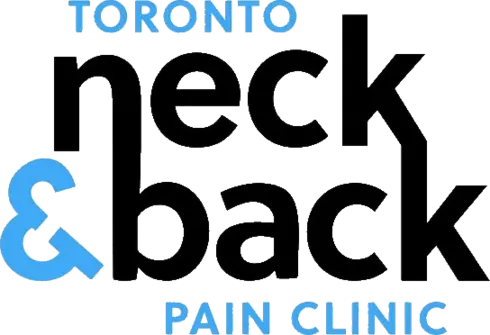If you’re reading this, chances are your neck or back pain has been slowing you down for a while. Maybe it started after a long day at your desk, maybe it came out of nowhere when you bent to pick something up, or maybe it’s been nagging you for years. Whatever the case, you’re not alone — neck and back pain are among the most common health complaints worldwide.
But here’s the good news: relief is possible, and you don’t have to live with pain as your “new normal.”
In this post, we’ll dive deep into why neck and back pain happen, the limits of “quick fixes,” what you can do at home to support your recovery, and why chiropractic care is uniquely positioned to help you get lasting results.
By the end, you’ll understand not only what’s going on with your spine, but also how to take the next step toward finally feeling better.
Why Neck and Back Pain Happen in the First Place
Your spine is one of the most impressive structures in your body. It supports your head and torso, protects your spinal cord, and allows you to move freely. But because it’s so central to everything you do, even small issues can create big problems.
Some of the most common causes of neck and back pain include:
- Poor posture — Long hours at a computer, phone, or behind the wheel can put constant stress on spinal joints and muscles.
- Repetitive strain — Doing the same motion over and over (lifting, twisting, or even typing) can cause imbalances.
- Injuries — Car accidents, sports injuries, or even “sleeping funny” can leave joints and muscles irritated.
- Disc problems — Herniated or bulging discs can irritate nerves, leading to pain that radiates into the arms or legs.
- Stress and tension — Your body doesn’t separate mental stress from physical stress; both can tighten muscles and amplify pain.
The result? Joints in your spine can become stiff, muscles overcompensate, and nerves may get irritated — creating that aching, sharp, or burning discomfort that keeps you from living your life the way you want.
Why Rest and Pain Pills Aren’t the Long-Term Answer
When pain strikes, it’s natural to want it gone fast. Many people turn to rest, ice packs, or over-the-counter pain medications. While these can provide short-term relief, they don’t fix the underlying problem.
- Rest: Lying down may feel good for a while, but too much inactivity can make stiffness and weakness worse.
- Painkillers: Medication may mask symptoms, but it doesn’t restore movement or correct spinal alignment.
- Self-cracking: Twisting your own neck or back may produce a “pop,” but it’s not the same as a chiropractic adjustment. In fact, it can sometimes make things worse by loosening the wrong joints while leaving the real problem unaddressed.
If you’ve been relying on these strategies but your pain keeps coming back, that’s your body’s way of telling you the root cause hasn’t been resolved.
What You Can Do at Home to Help Your Neck and Back
While professional care often makes the biggest difference, there are simple things you can do right now to support your spine:
- Stretch daily
Focus on gentle stretches for your neck, shoulders, and lower back. Think of it like brushing your teeth — a little maintenance every day prevents bigger problems later. - Strengthen your core
Strong core muscles support your spine. Simple exercises like bridges, planks, or even walking can make a noticeable difference over time. - Mind your posture
Try the “20-20-20” rule: every 20 minutes, stand up, stretch, or look 20 feet away from your screen for 20 seconds. Small breaks prevent big problems. - Manage stress
Breathing exercises, meditation, or light activity like yoga can reduce muscle tension caused by stress. - Use proper ergonomics
Adjust your workstation so your screen is at eye level, your chair supports your lower back, and your feet rest flat on the floor.
These steps don’t replace professional treatment, but they do make your body more resilient and help you maintain results after care.

Gentle morning mobility exercise like cat-cow or knee-to-chest stretch.
Why Chiropractic Care Stands Out
This is where chiropractic comes in. Chiropractors are trained to identify and correct dysfunction in the joints of your spine — something you can’t stretch, strengthen, or self-crack your way out of.
Here’s what makes chiropractic unique:
- Directly addressing the cause: Adjustments restore normal motion and alignment in joints that aren’t moving properly.
- Improved nerve function: When spinal joints move better, pressure on nearby nerves is reduced, often relieving pain that radiates into the arms or legs.
- Holistic approach: Chiropractors look at how your whole body is functioning, not just the spot that hurts.
- Safe and effective: Research supports chiropractic adjustments as a safe and effective treatment for many cases of neck and back pain.
- Short-term and long-term benefits: Many patients feel better after just a few visits, but adjustments also help prevent future flare-ups.
Think of it like this: if your spine were a door that kept sticking, painkillers would be like oiling the squeaky hinge. Chiropractic care is more like realigning the door so it swings smoothly again.
What to Expect at a Chiropractic Visit
If you’ve never seen a chiropractor before, you might wonder what actually happens. Here’s a quick overview:
- Consultation and exam: Your chiropractor will listen to your history, ask about your symptoms, and perform an exam to pinpoint what’s going on.
- Personalized plan: Based on your needs, you’ll receive a plan for care — whether that’s a few visits for short-term relief or ongoing care to support long-term function.
- Adjustments: Using safe, gentle techniques, the chiropractor restores proper movement to your joints.
- Self-care advice: You’ll often get tips on stretches, exercises, or posture to support your recovery.
Most people are surprised by how quick, comfortable, and effective an adjustment feels.
Real Results: Stories from Everyday People
- “I had constant lower back pain that made sitting at work unbearable. After a few adjustments, I could sit through the day without pain — something I hadn’t experienced in years.”
- “I used to crack my own neck all the time, but it never really helped. My chiropractor explained why and adjusted the right spots. Now the headaches I thought were ‘normal’ are gone.”
- “I didn’t want to get stuck in a long-term treatment plan. My chiropractor worked with me to get short-term relief, and I come back as needed. It’s flexible, affordable, and it works.”
These are the kinds of results that change not just how you feel, but how you live.

When posture is good, we tend to feel better…when bad, pain can result.
Why Choosing the Right Chiropractor Matters
Not all chiropractic care is the same. At our clinic, we focus on:
- Affordable, convenient care — No unnecessary long-term commitments.
- Short-term relief — Helping you feel better as quickly as possible.
- Mainstream, trusted methods — We use techniques supported by research and experience.
- Personalized attention — You’re not just a number; your care is tailored to your unique needs.
Our goal is simple: to help you get back to living your life without neck or back pain holding you back.
When to Seek Help
If your pain is…
- Persistent or worsening
- Affecting your sleep or daily activities
- Radiating into your arms, legs, or causing numbness
- Accompanied by headaches or stiffness
…then it’s time to get professional help. The sooner you address spinal issues, the easier they are to correct.
Final Thoughts: Don’t Settle for “Living With It”
Neck and back pain can feel overwhelming, but it doesn’t have to define your life. By understanding the root causes, supporting your spine with simple daily habits, and seeking care that directly addresses the problem, you can finally break free from the cycle of pain.
If you’ve been waiting for the “right time” to take action, consider this your sign. Relief starts with a conversation — and we’re here to help.






